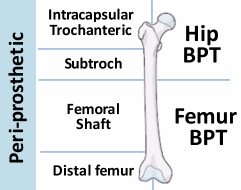The NHFD has opened a new audit system to accommodate the latest v13 dataset, which has been extended to include additional femoral fracture types. The new audit builds on the success of the NHFD over the last twelve years and will help the audit deliver new capabilities to meet the challenges of the next decade. The '2020' audit is now open to accept all patients admitted from midnight 1 January 2020 and all new femoral fracture patients meeting the eligibility criteria should be entered in the 2020 audit.
For all patients admitted in 2019 and earlier years, the existing '2019' NHFD will remain open and accessible. At some point, the database will be locked to new data and record updates, but will remain open in a read-only mode. You should complete all data entry for your 2019 patients (any patient admitted in 2019 or earlier) as soon as possible. The period end data will be extracted 17 February 2020 for statistical analysis.
Accessing the NHFD
You can easily switch between the 2019 and 2020 audits from the home page of each audit. You may use either audit to complete your audit records according to the date the patient admission date. Only patients admitted in 2020 can be accepted in to the new audit and likewise only patients admitted during 2019 or earlier can be accepted in to the 2019 NHFD audit.
New fracture and operation types
As documented in the v13 dataset, the NHFD are introducing several new fracture types. To help data entry we have introduced a 'map' of the femur to select the general fracture location and then a 'sub-type' option. We have also added several operation types, but these only apply to non hip fractures and only if you select 'Other' in the main list first.

BPT reporting
Reports for Q3 (October-December 2019) BPT will continue to be hosted in the 2019 system. A hip-fracture BPT report will be released soon for Q4 (January-March 2020). In addition, new 'femoral fracture' BPT report will be made available to include all 2020 femoral fracture BPT data, although the BPT does not come into effect for femoral fractures until April 2020. The criteria to be applied is similar to the existing hip fracture criteria, but will be reported separately.
Reports and Charts
Data from both audits will be combined for reporting purposes and run-charts will continue to show audit trends on a continuous basis. Note that the current charts will continue to show 'hip fracture' related statistics only. Future developments will include other femoral fracture data later.
Patient lists
Currently, patient data will be split between both systems, only new patients entered in the 2020 system will be searchable in the 2020 system and likewise only 2019 patients will be listed in the 2019 system. It is hoped that a new combined patient list will be developed in 2020 that will support quick-search capabilities and help assist data entry across the FFFAP audits.
Work in progress
The new 2020 system is still a work in progress and some reports and features will be added in the coming weeks. For instance, 120 day followup support will be added in when needed to support the 120 day followup process. Likewise, BPT reports for the current and new fracture types will be added in time for the end of the Q4 quarter. Other features such as exports/imports will be added shortly.
Other changes
A new data validation process highlights data issues as the form is completed. Fields missing a value will be highlighted and warnings given if the value is exceptionally high or low. If such a warning is given, you can either accept the warnings to confirm the data is accurate, correct the data or save the record as a draft for completion later if necessary. Each form tab-top will indicate any errors or warnings in that section.
We've added a new online help system to assist you when completing the data entry forms. In addition to new improved pop-up help, we've added field notes under each question where a hint might be useful. Initially, these notes are grayed-out, but will darken when you hover your mouse over them.
In the 2020 system, we have adopted the NHS number as a 'key' value and patients will be identified by their NHS number rather than their hospital assigned number. This change will help avoid duplicate records, but it does mean that the patients NHS number will be required to save a new audit record. To help identify overseas patients, we also require a date of birth and gender to be assigned to the record too.
The NHFD continues to collaborate with the National Audit of Inpatient Falls. Patients experiencing an inpatient fall in 2020 will be entered into NAIF using the new NAIF 2020 v2 dataset.
A number of other improvements have been made and new enhancements are in the pipeline during 2020.
If you have any queries, issues or feedback, please contact the audit support team.